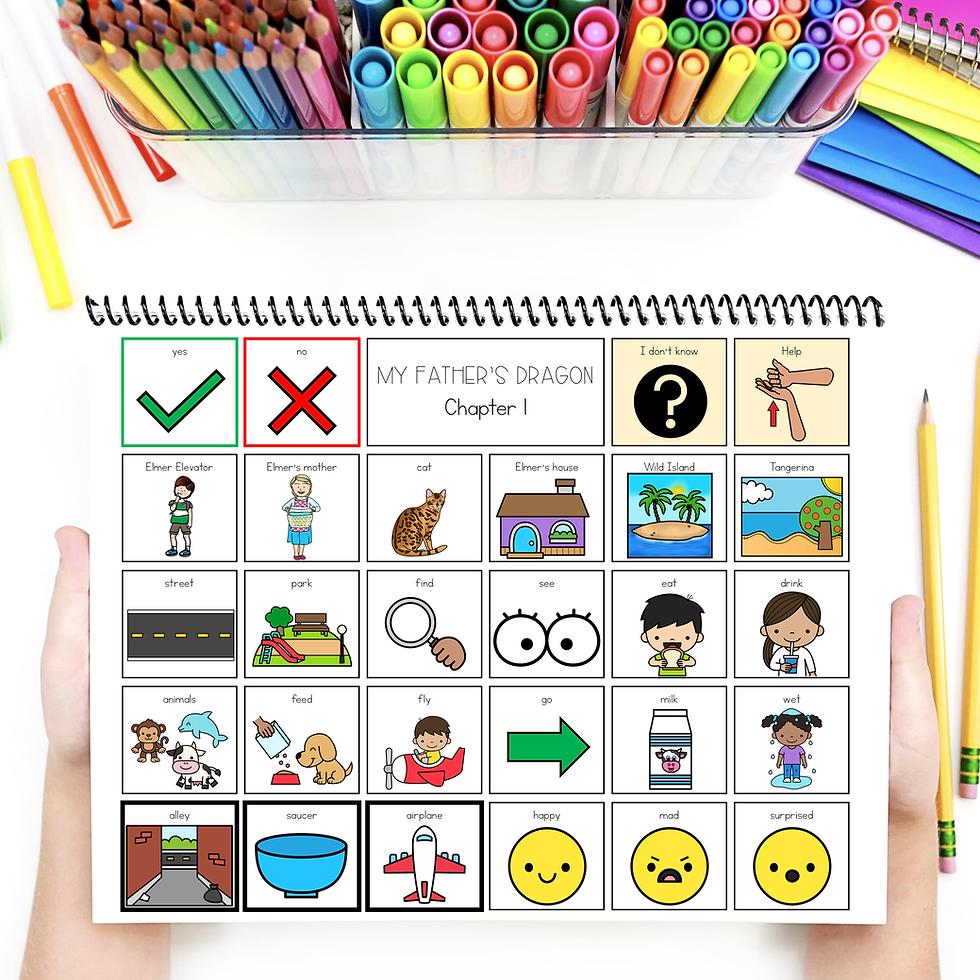UNLOCKING LEARNING: ENGAGEMENT STRATEGIES FOR NON-VERBAL STUDENTS
- Laura

- Sep 28
- 3 min read
Imagine you’re teaching a lesson, you pose a question, and one of your students who doesn’t use verbal speech lights up and gives you a giant thumbs up. The entire class notices, and suddenly, the student is part of the conversation. That’s the power of intentional engagement for non-verbal learners.
As special education teachers, we often work with students with minimal verbal language. Of course, our students communicate in many ways, so it's important to find ways that work for them to engage in classroom lessons and activities. When teachers increase opportunities for students to respond during lessons, engagement grows, and so does learning!
But here's the challenge- when students can't respond verbally, it can feel difficult to keep the momentum going in whole-group instruction. Too often, our verbal students take the lead, while our non-verbal students are unintentionally left in the background.
One question I get from many special education teachers after instructional observations is, "How can I keep my non-verbal students engaged in this lesson?"

Leverage Visual Supports
Visuals are a natural bridge for communication. When you're preparing a lesson, think about what types of visuals students will need to participate. This may be picture cards, symbol boards, or even classroom objects for students to point to or hold up. For example, during a science lesson, have visuals of “sink” and “float” so students can quickly indicate predictions.

★ Think about what types of visual supports can be created to use across lessons, like a color or description board, yes/no cards, or functional communication responses.
Implement Assistive Technology
Whether it’s a high-tech AAC device or a simple voice-output switch, assistive technology opens the door for participation. During read-alouds, a student can press a pre-recorded switch to chime in with the repeated line. Small moments like this make participation predictable and fun.
★ For a high-leverage, low-prep option, consider bringing in core vocabulary icons that can be used across lessons, rather than creating fringe word options for each one.
Encourage Peer Interaction
Sometimes the best engagement comes from classmates. Pair non-verbal students with peers for turn-and-talk activities, partner responses, or cooperative games. Peer modeling also reinforces that communication looks different for everyone, which builds an inclusive classroom culture.
Provide Alternative Response Options
Sometimes, we have to get a little creative with how our students are responding to our questions. If a student is still learning an AAC device, it may not yet be appropriate to expect them to respond to a task demand with their device. Here are some of my favorite low-barrier, high-engagement options:
Thumbs up/Thumbs down
Movement (stand up if/ raise your hand if/ move from one side of the room to the other)
Pre-recorded switches (with short phrases, yes/no, or even a fun sound effect to call attention to a vocab word)
Answer sticks (students hold up a response stick)
Eye gaze (students look towards a chosen answer)

Conclusion
Engagement doesn’t have to be complicated, but it does need to be intentional. By planning multiple response options into every lesson, you ensure that all students have a voice, even if it looks or sounds different.
Next time you plan a lesson, ask yourself: “How can every student in my class actively participate in this activity?”
When you design with this in mind, you’ll notice not only increased engagement but also increased confidence, independence, and joy in learning.











Comments